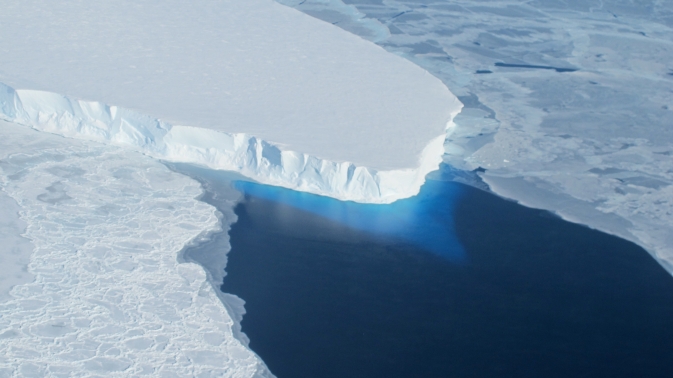

A large part of the West Antarctic Ice Sheet, a massive expanse of frozen water that flows into the Amundsen Sea, is likely already in the process of collapsing, probably irreversibly. A pair of studies show that part of the sheet is melting more quickly than previously thought, and that several of its large glaciers will probably melt into the ocean, raising global sea levels at least 10 feet in the coming centuries. And it cannot be stopped.
The first study, to be published May 16 in the journal Science, suggests that the Thwaites Glacier, a relatively fast-moving part of the ice sheet, will likely melt away into the ocean within several centuries, enough by itself to raise sea levels 2 feet. Another study to be published in the journal Geophysical Research Letters looked more broadly at Thwaites and other glaciers bordering the Amundsen Sea, and likewise concluded they are collapsing.
The term “collapsing” is perhaps not the best one, because it implies something sudden. These glaciers are expected to melt in the next several centuries, and both studies suggest there is little chance that their runaway melt and slide into the sea will slow down. While not sudden in normal everyday language, it is still quite rapid in geological terms.
The second study, done in part by NASA researchers, concerns three lines of evidence–collected over the last 40 years–that suggest the glaciers will soon melt away: the changes in their flow speeds, how much of each glacier floats on seawater, and the slope of the terrain they are flowing over and its depth below sea level. Regarding the first, they are flowing more quickly toward sea than before, and this pace is accelerating. Likewise, the amount of floating ice is increasing, and the shape of the sea floor under the ice doesn’t appear capable of stopping this increased flow. Specifically, the “grounding line”–where the glaciers cease to lay atop land, and begin rather to float over water, is moving inland quicker than thought, an observation reached by satellite measurements.
Part of the reason this is happening, the researchers think, is because melting makes the ice weigh less, thus causing more of it to float rather than rest on the sea floor. (And as you probably know, floating ice displaces as much water as melted ice.)
“The collapse of this sector of West Antarctica appears to be unstoppable,” said Eric Rignot, a UC Irvine glaciologist who is also with NASA’s Jet Propulsion Laboratory, in a statement. “The fact that the retreat is happening simultaneously over a large sector suggests it was triggered by a common cause, such as an increase in the amount of ocean heat beneath the floating parts of the glaciers. At this point, the end appears to be inevitable.”

For more on what the studies say, head over the NBC News.
